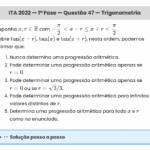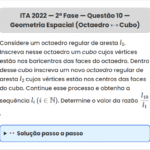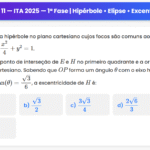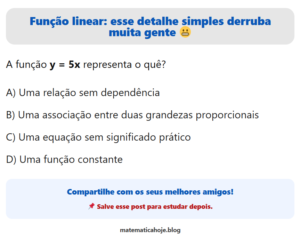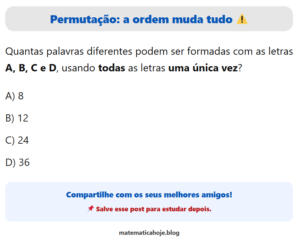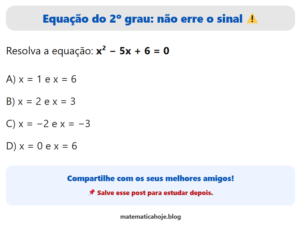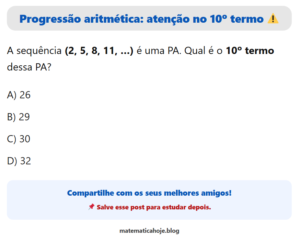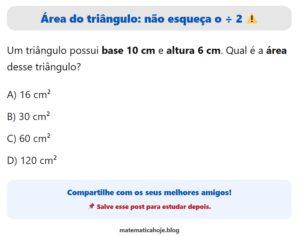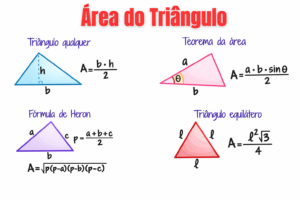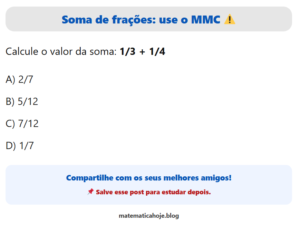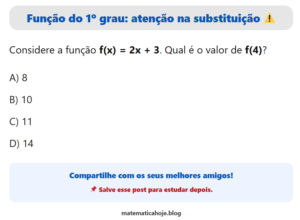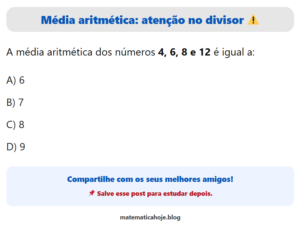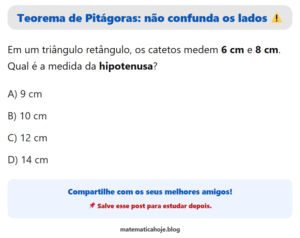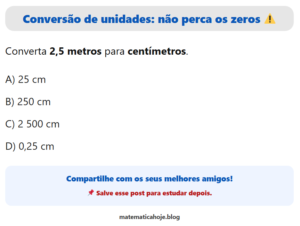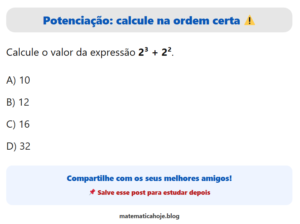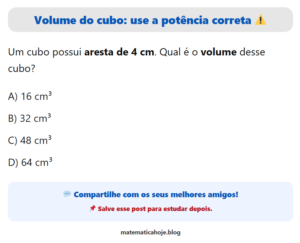ITA 2021 — 2ª Fase — Questão 6 — Números Complexos
Considere \(z=a(\sqrt{3}+i)\in\mathbb{C}\), onde \(a\in\mathbb{R}\).
Determine todos os valores reais de \(a\) para os quais \(z^{7}\) e \(z^{13}\) estão à mesma distância de \(z\) no plano complexo.
👀 Solução passo a passo
Note que \(\sqrt{3}+i=2\operatorname{cis}\!\left(\frac{\pi}{6}\right)\), logo
\[
z=2a\,\operatorname{cis}\!\left(\tfrac{\pi}{6}\right),\quad
z^{7}=(2a)^{7}\operatorname{cis}\!\left(\tfrac{7\pi}{6}\right),\quad
z^{13}=(2a)^{13}\operatorname{cis}\!\left(\tfrac{13\pi}{6}\right).
\]
Portanto \(z\) e \(z^{13}\) têm a mesma direção (ângulos que diferem de \(2\pi\)), ao passo que
\(z\) e \(z^{7}\) têm direções opostas (ângulos que diferem de \(\pi\)).
Assim,
\[
|z^{13}-z|=\big|\,(2a)^{13}-2a\,\big|=|2a|\cdot\big|(2a)^{12}-1\big|,
\]
\[
|z-z^{7}|=\big|\,2a-(2a)^{7}(-1)\,\big|=|\,2a+(2a)^{7}\,|=|2a|\big(1+|2a|^{6}\big).
\]
A condição pedida é \(|z^{13}-z|=|z-z^{7}|\). Se \(a=0\), ela é satisfeita.
Para \(a\neq 0\), podemos cancelar \(|2a|\) e obtemos
\[
\big|(2a)^{12}-1\big|=1+|2a|^{6}.
\]
Pondo \(x=|2a|^{6}\ (x\ge 0)\), fica
\[
|x^{2}-1|=1+x.
\]
Se \(0\le x<1\): \(1-x^{2}=1+x \Rightarrow -x(x+1)=0 \Rightarrow x=0\) (já contemplado por \(a=0\)).
Se \(x\ge 1\): \(x^{2}-1=1+x \Rightarrow x^{2}-x-2=0 \Rightarrow x=2\). Logo \(|2a|^{6}=2\Rightarrow |2a|=2^{1/6}\Rightarrow |a|=\dfrac{2^{1/6}}{2}=2^{-5/6}. \)
Se \(x\ge 1\): \(x^{2}-1=1+x \Rightarrow x^{2}-x-2=0 \Rightarrow x=2\). Logo \(|2a|^{6}=2\Rightarrow |2a|=2^{1/6}\Rightarrow |a|=\dfrac{2^{1/6}}{2}=2^{-5/6}. \)
Resposta: \(a=0\) ou \(a=\pm\dfrac{\sqrt[6]{2}}{2}\).
🔗 Veja também a questão anterior:
Matemática ITA 2021 — 2ª Fase — Questão 5


